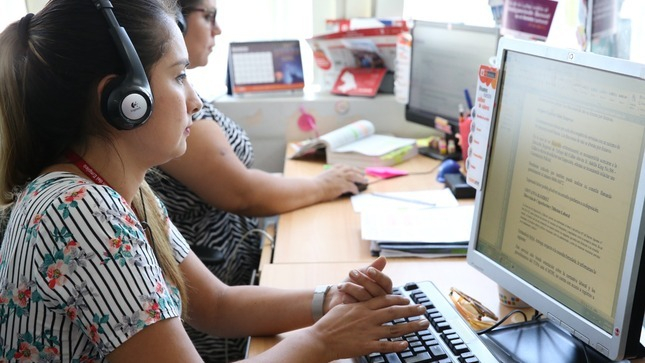
He Ministry of Labor and Employment Promotion (MTPE), within the framework of the International Women’s Dayinformed that, according to what was registered in his electronic spreadsheet, Jobs held by women in the formal private sector grew by 10.8% in November 2022, compared to the same month in 2021. This meant the generation of 144,000 additional formal jobs for the female population throughout the country.
The MTPE detailed that, in the penultimate month of last year, there were a total of 1,481,000 women formally working in private companies. “This growth occurred in almost all economic sectors, highlighting mainly education, with 28,000 additional jobs (28.2%); commerce, with 26,000 jobs (10.8%); other services, with 22,000 jobs (15.1%); restaurants and hotels, with 14,000 jobs (26.5%); and transportation, with 11,000 jobs (14.5%),” he pointed out.
By company size, the increase in female employment occurred in all strata, which was led by companies made up of more than 100 employees, where 54,000 additional jobs were produced (6.8%). The number of skilled workers (those who completed higher education) in the formal private sector increased by 50,000 (14.7%) and the group of unskilled workers by 89,000 (9.1%).
By age ranges, the greatest growth was observed in the group of adult workers (30 years and over), generating 107,000 additional jobs (12.2%); followed by the youngest (up to 29 years old) with an increase of 38,000 (18.2%).
The wage gap continues
For its part, the National Household Survey of the National Institute of Statistics and Informatics (INEI), with preliminary figures for the third quarter of 2022, reported that 8 million 180,000 women belonged to the Economically Active Population (EAP). Of this total, around 7 million 760,000 were working, which meant a growth of 3.8% compared to the same period in 2021.
However, the precariousness of employment and low income continue to be one of the serious problems that limit the adequate labor insertion of women. According to the aforementioned INEI survey, the informal employment rate affects 76.3% of women, exceeding by around 3.2 percentage points that registered in men, who reached 73.1%.
The salary difference by sex is a characteristic that still persists. Thus, employed men received an average of S/1,794 per month; while employed women, S/1,250; which meant a difference of S/544.
According to the same study, the unemployment level of women is higher than that of men, the female unemployment rate reaches 5.1%, higher by 2 percentage points compared to the male rate (3.1%). In this sense, the Minister of Labor and Employment Promotion, Alfonso Adrianzén, stressed that efforts will be multiplied from the sector to reduce the labor gaps between these two groups.
“We will face the challenge of seeking greater employment for women in the formal labor market. To do this, in the coming weeks, we will promote the Wiñay Warmi multisectoral intervention, through which we seek to bring 39 services from eight ministries specifically aimed at this population, which will contribute to closing gaps, ”she explained.
Finally, he stressed that the initiatives aimed at promoting the formal employment of women who are in the most vulnerable conditions will continue: “In 2022, 169,406 women accessed temporary employment through our Lurawi Peru program, this meant that 64% of job positions generated by the program were covered by this population. In addition, the regions of Junín, Ayacucho and Huancavelica registered a greater number of beneficiaries. We will continue on this path, ”she detailed.
Source: Larepublica
Alia is a professional author and journalist, working at 247 news agency. She writes on various topics from economy news to general interest pieces, providing readers with relevant and informative content. With years of experience, she brings a unique perspective and in-depth analysis to her work.












